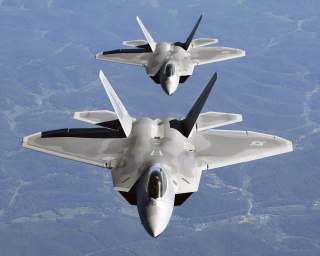Meet the Stealth Plane That Is Far, Far Superior to the F-22 Raptor
Can it be true?
As we have previously explained the Northrop YF-23A was designed to meet USAF needs for survivability, ease of maintenance and supercruise.
The video in this post features an interesting interview with YF-23 PAV-2 (Prototype Air Vehicle 2) Test Pilot Jim Sandberg about the PAV-2 first flight (landing gear problem). Sandberg also conducts a walk-around of the aircraft discussing typical checks he performed prior to a test flight.
Currently, the YF-23 PAV-2 is on display at the Western Museum of Flight.
(This first appeared earlier in July 2019.)
The YF-23A PAV-2 (S/N 87-801) on display at the Western Museum of Flight is on long term loan to the Western Museum of Flight from NASA. The Western Museum of Flight’s YF-23A PAV-2 used two General Electric YF120 engines. YF-23A PAV-1 used two Pratt & Whitney YF119 engines. PAV-2 was delivered in October 1995 to the Northrop Grumman Hawthorne facility where it underwent some preliminary repairs in preparation for formal restoration activities at the Western Museum of Flight.
As we have previously explained the Northrop YF-23A was designed to meet USAF needs for survivability, ease of maintenance and supercruise.
In 1986, the USAF awarded demonstration contracts to two competing industry teams, the Lockheed-Boeing-General Dynamics (whose proposal was the YF-22A) and the Northrop-McDonnell Douglas (whose proposal was the YF-23A), which would have competed for one versus the other in the Advanced Tactical Fighter (ATF) program.
Northrop built two YF-23A prototypes: the first YF-23 (serial number 87-0800), PAV-1, was rolled out on Jun. 22, 1990 and took its 50-minute maiden flight on Aug. 27 with Alfred “Paul” Metz at the controls while PAV-2 made its first flight on Oct. 26, piloted by Sandberg. The first aircraft was painted charcoal gray and was unofficially nicknamed “Spider” and “Black Widow II”, the latter after the Northrop P-61 Black Widow of World War II because it featured a red hourglass marking resembling the marking on the underside of the black widow spider before Northrop management had it removed. PAV-2 was painted in two shades of gray and nicknamed “Gray Ghost”.
The tests demonstrated Northrop’s predicted performance values for the YF-23: the YF-23 was stealthier and faster, but the YF-22 was more agile.
On Apr. 23, 1991, Secretary of the Air Force Donald Rice announced that the YF-22 was the winner, while the YF119 was chosen over the YF120 to power the F–22. The Lockheed and Pratt & Whitney designs were rated higher on technical aspects, were considered lower risks, and were considered to have more effective program management.
This first appeared in Aviation Geek Club here.
Image: Wikimedia.

